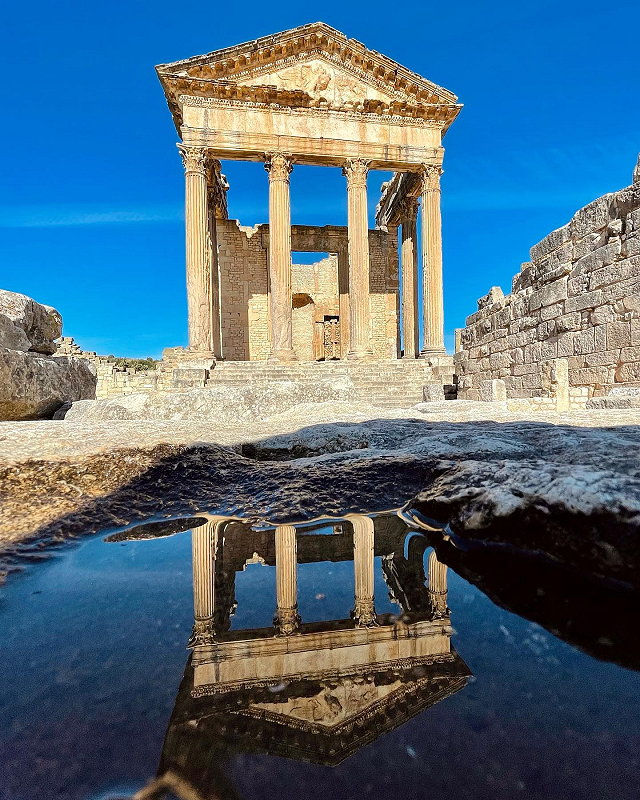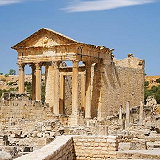
|
Dougga Teboursouk, Tunisia ☎ +33 1 45 68 43 78 Last Updated: 10/06/2024 |
| Dougga, located near the town of Teboursouk in northern Tunisia, is one of the most well-preserved Roman archaeological sites in North Africa and a UNESCO World Heritage Site. Known for its impressive ruins and historical significance, Dougga provides a unique glimpse into the life of an ancient Roman city. | |
| - Dougga was originally a Numidian city before being fully integrated into the Roman Empire. It was known as Thugga in the pre-Roman period and developed significantly under Roman rule, particularly during the 2nd and 3rd centuries CE. - The city was a thriving center of commerce and culture and featured public buildings, temples, baths, and houses typical of a prosperous Roman town. - The most iconic structure in Dougga is the Capitolium, a well-preserved Roman temple dedicated to the Capitoline Triad: Jupiter, Juno, and Minerva. It was built around 166 CE and is located at the city's highest point, offering commanding views of the surrounding landscape. Dougga’s historical layers provide valuable insight into the life of a Roman city in North Africa, highlighting the coexistence of Roman and indigenous cultures. Its temples, homes, and public buildings paint a vivid picture of daily life, governance, religion, and entertainment during the Roman Empire. | |
Website Wikipedia
Tunisia » Tun
Place » Historical Place

|
Great Mosque of Kairouan Place » Historical Place The Great Mosque of Kairouan, located in Kairouan, Tunisia, is one of the most important and oldest mosques in the Muslim world, dating back to 670 CE. Founded by the Arab general Uqba ibn Nafi, it holds a revered place in Islamic history and architecture and is considered one of the holiest sites in North Africa. The mosque has been listed as a UNESCO World Heritage Site due to its architectural and cultural significance. 37 views 💖 1Rue Sidi Abdelkader, Kairouan, Tunisia |

|
Archaeological site of Carthage Place » Historical Place The Archaeological Site of Carthage, located in Carthage, Tunisia, is a significant and historically rich area recognized as a UNESCO World Heritage Site since 1979. Situated on the coast of the Mediterranean, Carthage was originally founded by the Phoenicians in the 9th century BCE and became one of the most powerful cities of the ancient world. The site holds layers of history, showcasing influences from the Phoenician, Punic, and Roman civilizations. 38 views 💖 188 La Goulette Rd, Carthage, Tunisia |
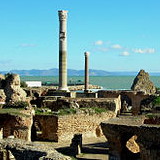
|
Baths of Antoninus Place » Historical Place The Baths of Antoninus or Baths of Carthage, located in Carthage, Tunisia, are the largest set of Roman thermae built on the African continent and one of three largest built in the Roman Empire. They are the largest outside mainland Italy. The baths are also the only remaining Thermae of Carthage that dates back to the Roman Empire's era. The baths were built during the reign of Roman Emperor Antoninus Pius. 204 views 💖 1Tunisia |
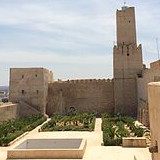
|
Ribat of Sousse Place » Historical Place The Ribat of Sousse is a historical site located in the city of Sousse, Tunisia. It is a fortified monastery or fortress that dates back to the 9th century and is considered one of the best-preserved examples of Islamic military architecture in the Mediterranean region. 214 views 💖 1Sousse, Tunisia |
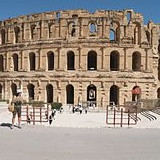
|
Amphitheatre of El Jem Place » Historical Place The Amphitheatre of El Jem, also known as the Colosseum of Thysdrus, is an ancient Roman amphitheatre located in the town of El Jem, Tunisia. It is one of the most impressive and well-preserved Roman amphitheatres in the world and is a UNESCO World Heritage site. 209 views 💖 1Route Mahdia, El Jem, Tunisia |
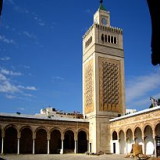
|
Tunisia Place » City Tunisia is a country located in North Africa. It is bordered by Algeria to the west and Libya to the southeast, with the Mediterranean Sea to the north and east. Tunisia is known for its rich history, diverse culture, and beautiful landscapes. it covers 163,610 km2 (63,170 sq mi), and has a population of 12.1 million. 226 views 💖 1Tunisia |
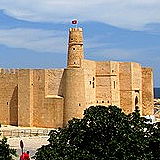
|
Ribat of Monastir Place » Historical Place The Ribat of Monastir, located in Monastir, Tunisia, is a historic Islamic fortress or stronghold with religious and military significance. Ribats were typically used as defensive structures during the early centuries of Islam, and they also served as centers for Islamic education and spiritual retreats. 55 views 💖 1Rte de la Falaise, Monastir, Tunisia |
Write a Review :
Dougga
|
|
